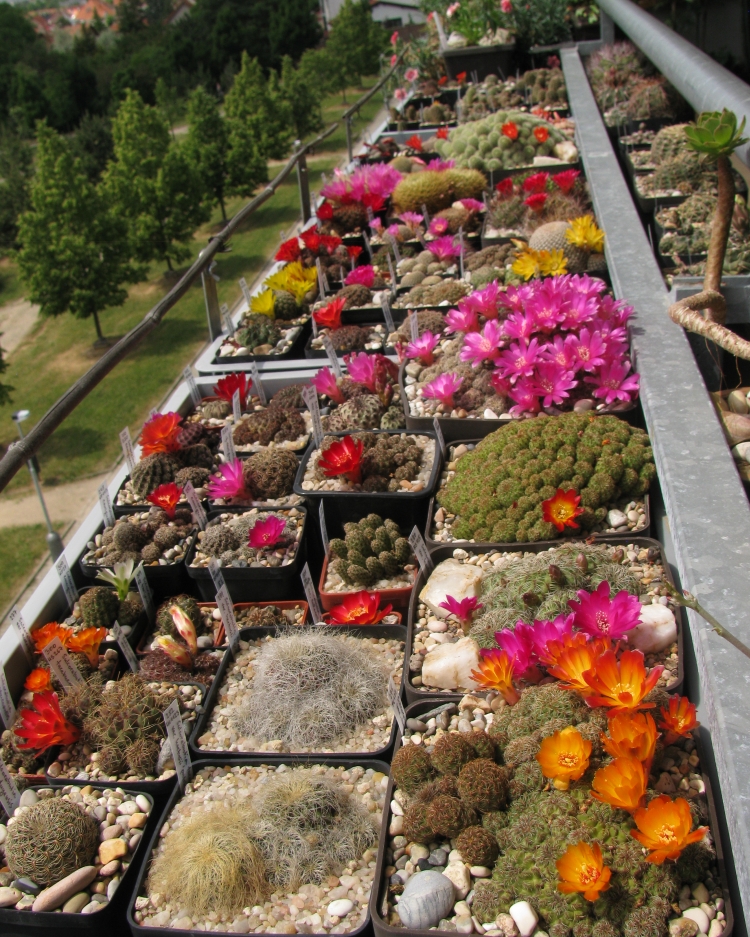How to grow cacti and other succulent plants

About succulents
Succulents are plants that adapted to life in dry environments by being able to store water. The most famous group of succulent plants are undoubtedly cacti, but there are many other interesting and beautiful plants that have chosen the same survival strategy, although they are not related to cacti at all.
Succulents can be found in all corners of the world and are very diverse. Therefore, of course, their requirements for cultivation are also diverse. If you bring home a new succulent, you should look up information on growing that particular species. Nevertheless, some basic, more general advice can be given about growing succulents.
Soil
The substrate for succulents should be well permeable and should dry out easily. This can be achieved by mixing soil with sand or another mineral component (pumice stone, gravel, perlite).
Water
Succulents should be watered during the growing season (when it rains in their homeland). Water them abundantly so that the plants have a chance to drink enough. Let the substrate dry out completely before watering again. If the surface of the stem or leaves starts to wrinkle, then it is definitely a good idea not to delay watering. During the dormant period, do not water the plants at all or only minimally.
Temperature
Some succulents are happy year-round at room temperature. However, many of them require colder winters. A winter garden, a cold greenhouse or the space between double-glazed windows can be used for this. Ideal winter temperatures vary for different species, around 10 °C is usually ideal. Cacti can also be overwintered in a dark room. It is important not to water the plants all winter and not to place them in a room with high humidity (e.g. a damp basement).
Light
With a few exceptions, succulents like as much sunlight as we can give them. They will appreciate being placed outdoors for the summer. Another advantage of growing succulents outside is the constant movement of air. Thanks to that the plant does not overheat even during the greatest summer heat. It is a good idea to move succulents from a darker place (such as a winter garden) to a lighter one in cloudy weather. Moving them too quickly from the shade to the sun is a shock for the plants, their surface can get burned.
Containers
Succulents can be grown in ceramic or plastic pots. It should be taken into account that plastic containers dry more slowly. We choose the shape and size of the flowerpot according to the type of root system of the plant. In general, shallower and wider containers are preferable because they dry out faster, but there are succulents with taproots that require deep containers. The container should never be much larger than is absolutely necessary for the plant. Succulents do better when they are slightly "jammed" in it.
Fertilisers
If you transplant the succulent regularly once every 2-3 years, fertilization is usually not necessary. In case you use a highly mineral substrate (e.g. pumice stone), it is advisable to fertilize 1-2 times during the growing season with a water-soluble fertilizer that does not contain too much nitrogen (e.g. a combination supporting fruit and flower).
Frost-hardy succulents
A number of succulents, and oddly enough, cacti, grow in places where frost is common in winter. Such species can be grown outside all year round even in the conditions of Central Europe. Good drainage of the substrate during the summer and protection against moisture during the winter are key to growing these plants outdoors. A rock garden, which can be covered with a transparent roof for the winter, or an unheated greenhouse, is therefore ideal. A variety of cacti and succulents from the US Southwest, Patagonia, and even southern Africa can be grown this way.
Succulents for the apartment
If you want to grow cacti and other succulents without the possibility of giving them cold overwintering, e.g. in a block of flats, it is advisable to choose species from dry and year-round warm areas, such as the east of Brazil, some Caribbean islands or northeastern Africa. For these species, it is sufficient to reduce the watering in the winter, or, in the case of cacti, to stop watering completely.
More information
The PřF UK Botanic Garden consultations for the public take place every Tuesday from 10:00 to 12:00. Address:
Prague 2, Na slupi 16, ground floor, 2nd door on the right (door n. 104).
